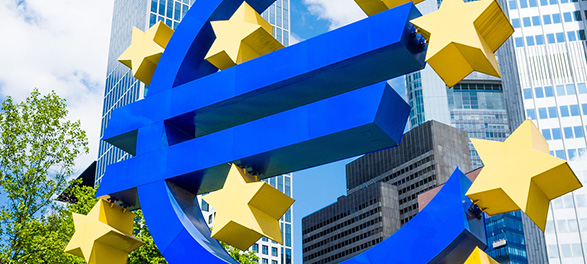
This month, the European Central Bank (ECB) has made a number of moves designed to stimulate the continent’s economy, including the introduction of negative interest rates. According to the BBC, the ECB is the first major central bank to implement negative interest rates.
The move became official when the ECB cut its deposit rate for banks from zero to -0.1%. The hope is that this will entice banks to lend money as opposed to holding it and keeping it out of circulation. The benchmark rate was also lowered to 0.15%, down from 0.25%, reducing the amount of interests banks will have to pay on long-term loans which should lead to cheaper loans to businesses and other bank customers.
The move to negative interest rates is not unprecedented, but it is rare, and results have been mixed. According to analysts, when Sweden reduced their rates, there was no measurable impact. Denmark’s move below zero did help to reduce inflation, but the Danish Banking Association reported a drastic drop in bank profits.
According to the BBC, Chief UK and European economist at HIS Global Insight, Howard Archer commented, “There has to be considerable uncertainty as to how effective negative deposit rates will turn out to be.” Archer goes on to say, “Despite being widely anticipated and in some quarters criticized for occurring too late, it is still a bold and unusual move by the ECB to take its deposit rate into negative territory.”
In addition to the negative interest rates, the ECB also announced other measures that would be taken in order to combat the struggling European economy.
According to Mario Draghi, president of the ECB, long term loans to commercial banks will be made at reduced rates through 2018. The BBC reports that these loans will be capped at 7% of the amount that the individual banks in question lend to companies. This provides a monetary incentive for banks to lend more money to companies so that they can borrow at diminished rates from the ECB.
The ECB did not initially want to institute a large asset-buying program like the quantitative easing (QE) instituted by the U.S. Federal Reserve when the economic issues began. According to Mr. Draghi, this could soon change. Policymakers at the ECB have now unanimously agreed to consider more unconventional measures, like QE, to boost inflation.
“Are we finished? The answer is no. We aren’t finished here. If need be, within our mandate, we aren’t finished here,” Draghi told the BBC. “Now we are in a completely different world,” he said, referring to what he calls the “real economy,” which is the actual money going to companies that can directly impact fiscal recovery.
These drastic measures show a real fear of inflation at the ECB. Any signs of ineffectiveness from these new measures could lead investors back to safe-haven investments like physical gold.


